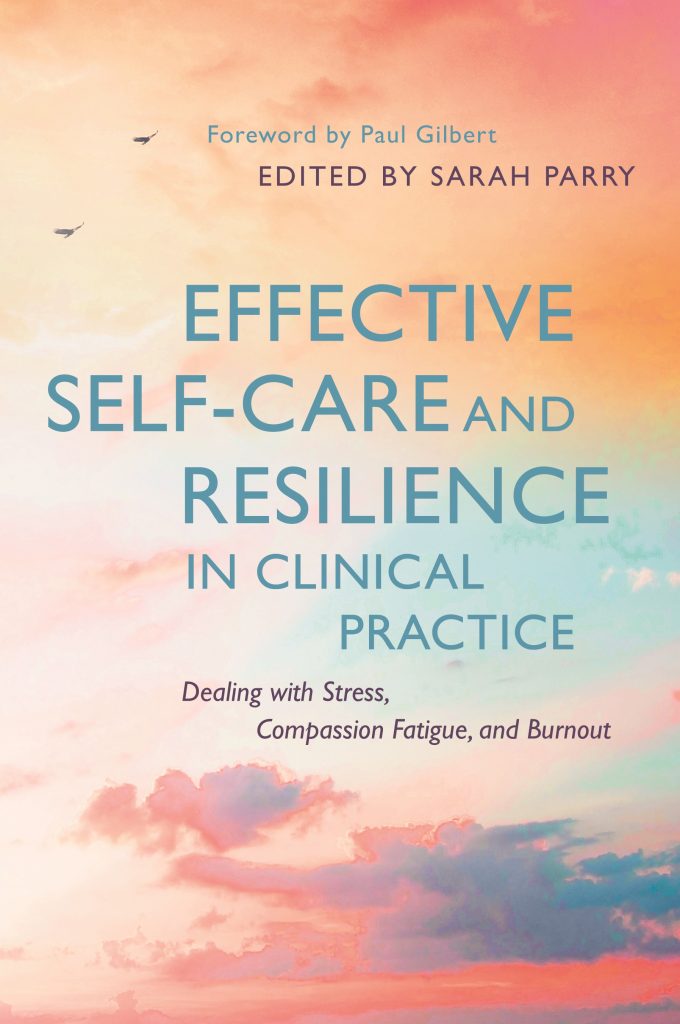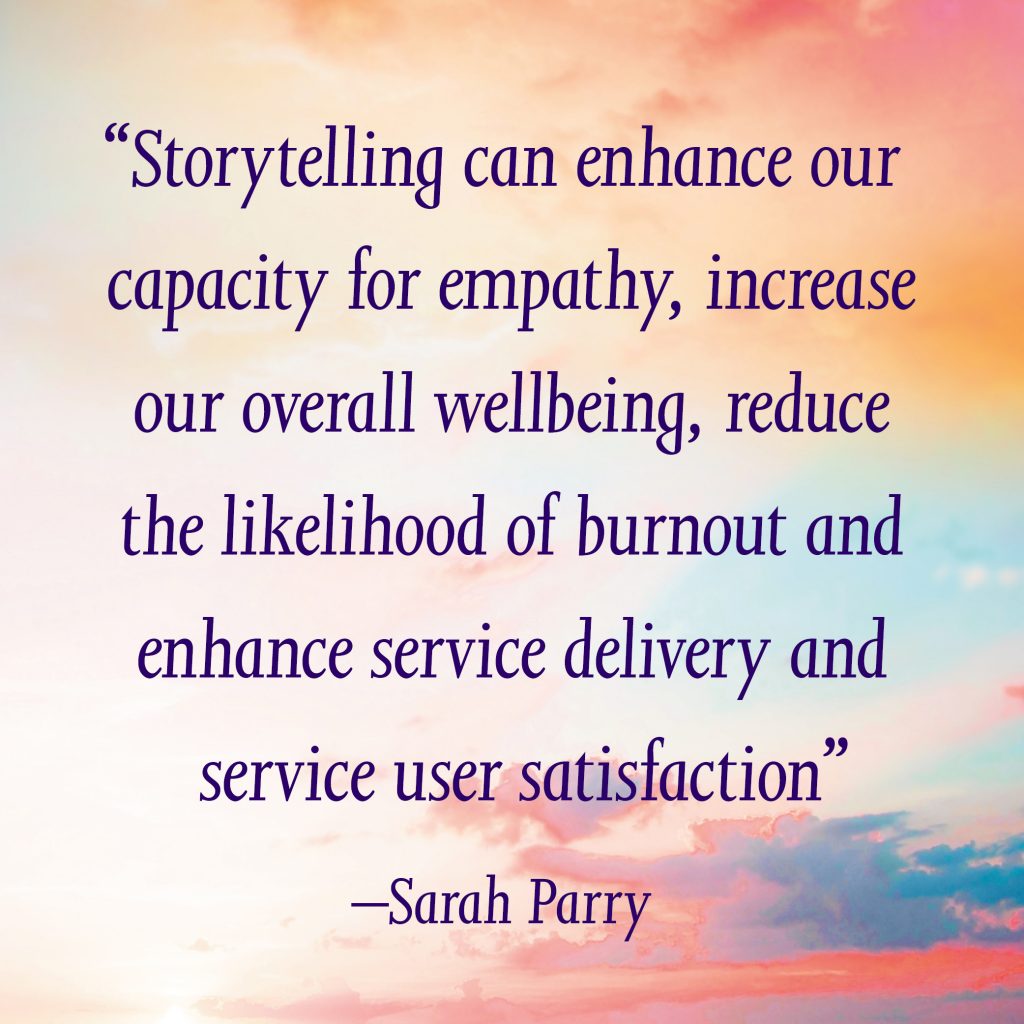Sarah Parry is a senior lecturer in Clinical and Counselling Psychology at Manchester Metropolitan University. Her new book, ‘Effective Self-Care in Clinical Practice,’ explores how compassion can enable clinical practitioners to foster hope and resilience for themselves and their clients. We talked to Sarah about her motivations behind the book and why it’s so important for healthcare practitioners to learn how to effectively self-care.

Effective Self-Care and Resilience in Clinical Practice is a collection of essays from different practitioners, that explore the need for compassion in therapeutic work. Where did the idea for the book originate from?
Developing a personal compassionate framework for self-care has been an on-going endeavour of mine for some years. When I started working in healthcare settings that could, at times, present multiple challenges to my own well-being, I became increasingly curious as to how to overcome these emotional hurdles. I am also a great believer in the power of stories, both in terms of helping us see through the eyes of another, as well as giving us a mirror to hold up to our own experiences, helping us develop a deeper knowledge of ourselves. My motivation for this book came from my own experiences of struggling with competing demands and a realisation that working harder and harder isn’t always the answer. I wanted to understand more about how people developed effective self-care strategies based on compassionate teachings and practices, to enhance their own well-being, resilience and ability to maintain a hopeful outlook. Consequently, I started talking to colleagues who I knew managed their self-care well, as well as people I didn’t know at all at that stage but whose writings inspired me and encouraged me to think about how well I was looking after myself.
How did you go about finding the contributors to the book?
First, I went to the people I had already learnt a lot from, such as Dr Jen Davies, who fully embraces a compassionate approach to life. I also knew that Dr Liz Tallentire, Dr Kirsty Atherton and Dr Hannah Wilson, colleagues from clinical training, were light years ahead of me in terms of sticking with a compassionate framework for self-care – so they were at the top of my wish list too. I also contacted people whose work I had become familiar with, such as Simone Bol, Edith Macintosh and Mary Prendergast whose wisdom I was keen to learn from. Then I started talking to the ‘learners in progress’ who, like me, were making turns in the right direction but had some way to go. The result is the collection of stories presented in the book – honest, heartfelt and unapologetically exposing accounts of how difficult it can be to keep compassion truly central in our practice and to ourselves. Indeed, the honesty and personal nature of the chapters led me to re-write part of the introduction fairly late on as it didn’t feel compassionately accountable to leave the introduction as only a brief literature review, without declaring my personal interest in developing the book and learning from the contributors.
“We are all storytellers. We all live in a network of stories. There isn’t a stronger connection between people than storytelling.” –Jimmy Neil Smith, Director of the International Storytelling Center

Why is it so important for clinical practitioners to be mindful of their own well-being, as well as that of their patients?
People in caring roles, in both personal and professional capacities, are often really good at caring for others and prioritising other people’s needs over their own. However, this is not sustainable over long periods of time and we all need to know how we can restore ourselves, take some down time and be kind and nurturing towards ourselves. That said, knowing this and doing this are very different things. On some level, I appreciated the importance of self-care and practitioner well-being for a long time, without actually doing much about. Despite all the literature around compassion fatigue, vicarious trauma, burnout and all the other obstacles we have to contend with in many sectors at the moment, it wasn’t until I started to feel really exhausted that I addressed my needs as a person and practitioner, rather than pretending I could be two forms of the same person.
“To be human is to experience oneself as making choices and being generally held accountable for one’s actions.” (Todres, Galvin & Holloway, 2009, p.4)
In addition to learning a lot from colleagues while developing the book, one of my favourite surprises that came up during the process was how restorative our work can be when we have the privilege of witnessing the strength of others. One of the aims of the book was to slow down helpful and unhelpful processes around self-care to understand them better. For me, learning more about the healing impact of compassionate connection and compassionate growth are fascinating aspects of the chapters and I am so grateful to all the contributors who were so generous with their stories.
What do you hope readers will take away from the book?
I hope the guideposts that were developed towards the end of the book, based on the stories told throughout the chapters, will give readers a tangible platform from which to develop their own compassionate practice – for themselves as well as others. I also hope the links between compassion, resilience and hope have been brought together and illustrated in a helpful way for people in caring roles – I think these really are the pillars of working well in demanding environments. Conversely, I really hope texts such as this don’t contribute to the tolerance of the often ‘hostile environments’ that many people experience in health and social care and education at present. As I discuss in the book, there is a limit to how much people can be expected to tolerate at an individual level in terms of work-based stressors. Compassionate accountability is required at all levels, individual, organisational and political, in order to support practitioners to do their best for users of services and for themselves.

Does the book include practical guidance on how to manage compassion fatigue?
Yes, there was so much information in the book; I thought it would be helpful to try to develop some guideposts by means of a conclusion. In short, the guideposts pull together and broaden out the many helpful tips and recommendations in the chapters. I really hope this is just the starting point for these guideposts and that we can continue to develop them over time as we hear from more practitioners who have found helpful ways to incorporate compassionate growth into their lives.
Do you have any advice for clinicians who may be feeling the effects of burnout?
Most of us have been there so the first thing I would say is that you’re not alone! Whilst everyone will experience fatigue and burnout in their own unique way, I think most of us have come to see that compassionate connection with people we care about and a shared sense of togetherness are so important in terms of recognising our struggles and addressing them – borrowing from the resources of others if we feel we don’t have the resources ourselves at that moment in time. One of the funny things that came up again and again when I was discussing this book with people was how many of us, at some point or other, have been nicknamed ‘superwomen’ by female friends or colleagues – usually because of how much we ‘fit it’. However, none of us are, we’re all painfully human, flaws and all – so let’s stop the ‘superwoman’ conversation and focus on helping each other out instead.
For more information on ‘Effective Self-Care in Clinical Practice’ or to buy this book, please follow this link.
Why not follow us on Facebook @JKPReligion or on Twitter @JKPBooks for more content from our authors.